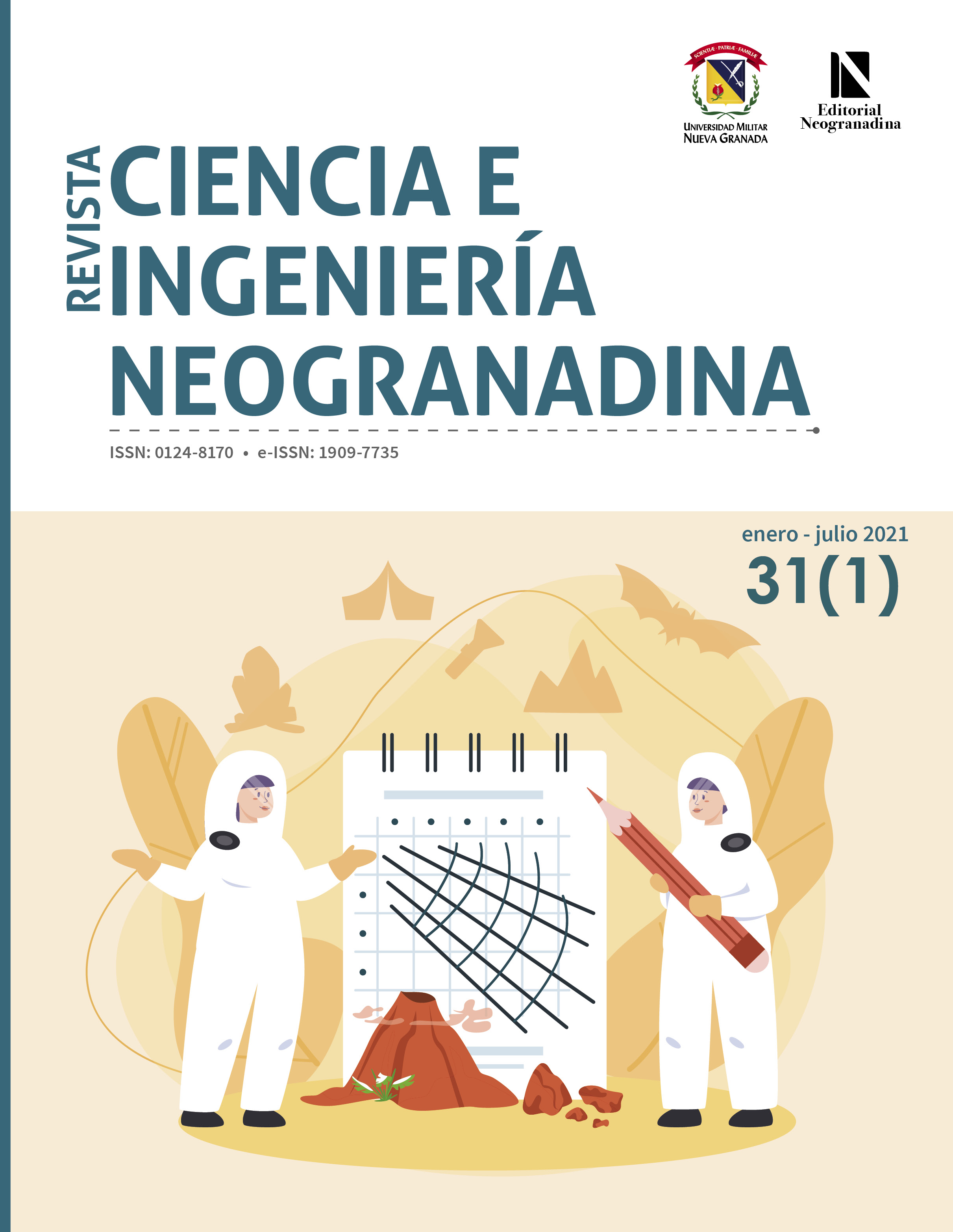Estimation of Water Loss Due to Evaporation in the El Cazadero Dam, Mexico, during a Drought
Abstract
In Mexico, large dams have been a critical component of the water supply. However, the places where they can be built are scarcer every day, a situation that adds to the high costs and social conflicts that they cause. Much of the water stored in dams is lost due to evaporation, so technological alternatives are currently being investigated to reduce it. Regarding the determination of evaporated volumes, data obtained with evaporimeters do not represent actual evaporation, being necessary to apply theoretical models in combination with field measurements to reach better approximations. The main objective of this research is to calculate the water evaporation in the El Cazadero dam located in the State of Zacatecas, Mexico, through Penman’s semi-empirical equation using data from the El Cazadero or 32006 weather station. The study area was selected due to its aridity and recurring drought problems that affect water availability. Evaporation results obtained from applying the theoretical model are compared with those reported by the weather station, showing a good correlation. In addition, results of the average daily evaporation are used to determine the approximate volume of water evaporated in the hydrological year between November 2010 and October 2011, when a severe drought occurred, whose magnitude and economic value indicates the necessity to carry out more research on this subject and propose public policies to develop and implement technological alternatives that mitigate this phenomenon.
Downloads
References
D. F. Campos Aranda, Procesos del ciclo hidrológico, San Luis Potosí, México: Universidad Autónoma de San Luis Potosí, 1998.
P. Guido, Cambio climático: bases para la adaptación y mitigación en las regiones hidrológico-administrativas en México, México, 2019. [Online] ISBN: 978-607-8629-14-5.
K. Verbist, F. Santibañez, D. Gabriels, and G. Soto, Atlas de Zonas Áridas de América Latina y El Caribe. Chile: Cazalac. 2010.
F. F. O. García and L. G. Matías, Sequías. México: Centro Nacional para la Prevención de Desastres (Cenapred), 2002.
D. A. Wilhite. Drought: A Global Assessment, vol. I, London: Routledge, 2000.
P. Rakhecha and P. Vijay Singh, Applied hydrometeorology, New Delhi, India: Springer Science & Business Media, 2009.
S. C. Herring, N. Christidis, A. Hoell, J. P. Kossin, C. J. Schreck III, and P. A. Stott, “Explaining extreme events of 2016 from a climate perspective,” Bull. Amer. Meteor. Soc., vol. 99, no. 1, pp. S1-S157, 2018. https://doi.org/10.1175/bams-explainingextremeevents2016.1
D. Guha-Sapir, R. Below, and P. Hoyois, em-dat, The Emergency Events Database-The ofda/cred International Disaster Database. Brussels, Belgium: Université catholique de Louvain (ucl)-cred, 2016.
R. A. Giner, L. C. Fierro, and L. F. Fernando Negrete, Análisis de la problemática de la sequía 2011-2012 y sus efectos en la ganadería y agricultura de temporal, Mexico: Comisión Nacional de las Zonas Áridas (Conaza), 2011. uri: http://10.0.0.98/xmlui/handle/1/1626
J. L. Caballero, “México, en el umbral de una sequía histórica,” Economista, vol. 23, 2012.
A. S. Goudie, Human impact on the natural environment. Hoboken, nj: John Wiley & Sons, 2018.
J. F. Maestre-Valero, D. Martínez-Granados, V. Martínez-Alvarez, and J. Calatrava, “Socio-economic impact of evaporation losses from reservoirs under past, current and future water availability scenarios in the semi-arid Segura Basin,” Water Resour. Manag., vol. 27, no. 5, pp. 1411-1426, 2013. https://doi.org/10.1007/s11269-012-0245-4
D. Martínez-Granados, J. F. Maestre-Valero, J. Calatrava, and V. Martínez-Álvarez, “The economic impact of water evaporation losses from water reservoirs in the Segura basin, SE Spain,” Water Resour. Manag., vol. 25, no. 13, pp. 3153-3175, 2011. https://doi.org/10.1007/s11269-011-9850-x
F. Molle and A. Closas, “Co-management of groundwater: A review,” Wiley Interdiscip. Rev. Water, vol. 7, no. 1, p. e1394, 2020.
H. Afkhami, H. Malekinezhad, and E. Esmailzadeh, “Effect of floating balls on evaporation reduction from open water resources (Case study: Tailing dam of Sarcheshmeh copper mine) Kerman,” Arid Biome, vol. 8, no. 1, pp. 59-73, 2018. https://doi.org/10.29252/aridbiom.8.1.59
E. Elba, B. Urban, B. Ettmer, and D. Farghaly, “Mitigating the Impact of Climate Change by Reducing Evaporation Losses: Sediment Removal from the High Aswan Dam Reservoir,” Am. J. Clim. Change, vol. 6, no. 02, pp. 230-246, 2017. https://doi.org/10.4236/ajcc.2017.62012
A. Khandelwal, A. Karpatne, M. E. Marlier, J. Kim, D. P. Lettenmaier, and V. Kumar, “An approach for global monitoring of surface water extent variations in reservoirs using modis data,” Remote Sens. Environ., vol. 202, pp. 113-128, 2017. https://doi.org/10.1016/j.rse.2017.05.039
F. Helfer, C. Lemckert, and H. Zhang, “Investigating techniques to reduce evaporation from small reservoirs in Australia,” in Proc. 34th World Congr. Int. Assoc. Hydro-Environment Research and Engineering: - 33rd Hydrology and Water Resources Symp. and 10th Conf. on Hydraulics in Water Engineering, Brisbane, Australia, 2011, p. 1747.
S. A. Hashemi Monfared, M. Rezapour, and T. Zhian, “Using Windbreaks for Decreasing Lake and Reservoir Evaporation: A Case Study from Iran.” Pol. J. Environ. Stud., vol. 28, no. 4, pp. 2289-2298, 2019. https://doi.org/10.15244/pjoes/89984
P. Rosa-Clot, “fpv and Environmental Compatibility,” in Floating pv Plants, Academic Press, 2020, pp. 101-118. https://doi.org/10.1016/b978-0-12-817061-8.00009-9
K. Simon, R. Shanbhag, and A. H. Slocum, “Reducing evaporative water losses from irrigation ponds through the reuse of polyethylene terephthalate bottles,” J. Irrig. Drain. Eng., vol. 142, no. 2, p. 06015005, 2015. https://doi.org/10.1061/(asce)ir.1943-4774.0000972
M. E. Taboada, L. Cáceres, T. A. Graber, H. R. Galleguillos, L. F. Cabeza, and R. Rojas, “Solar water heating system and photovoltaic floating cover to reduce evaporation: Experimental results and modeling,” Renew. Energy, vol. 105, pp. 601-615, 2017. https://doi.org/10.1016/j.renene.2016.12.094
A. H. Cavusoglu, X. Chen, P. Gentine, and O. Sahin, “Potential for natural evaporation as a reliable renewable energy resource,” Nat. Commun., vol. 8, no. 1, p. 617, 2017. https://doi.org/10.1038/s41467-017-00581-w
P. C. Milly and K. A. Dunne, “Potential evapotranspiration and continental drying,” Nat. Clim. Change, vol. 6, no. 10, pp. 946-949, 2016. https://doi.org/10.1038/nclimate3046
A. Azhoni, S. Jude, and I. Holman, “Adapting to climate change by water management organizations: Enablers and barriers,” J. Hydrol., vol. 559, pp. 736-748, 2018. https://doi.org/10.1016/j.jhydrol.2018.02.047
S. Z. Losgedaragh and M. Rahimzadegan, “Evaluation of sebs, sebal, and metric models in estimation of the evaporation from the freshwater lakes (Case study: Amirkabir dam, Iran),” J. Hydrol., vol. 561, pp. 523-531, 2018. https://doi.org/10.1016/j.jhydrol.2018.04.025
W. J. Shuttleworth, Evaporation, uk: Institute of Hydrology, the Natural Environment Research Council, 1979.
J. Collado, “Hidrología superficial en México: estado del arte y necesidades de investigación,” Tecnol. Cienc. Agua, pp. 62-81, 2015.
B. Ait Hssaine, O. Merlin, J. Ezzahar, N. Ojha, S. Er-Raki, and S. Khabba, “An evapotranspiration model self-calibrated from remotely sensed surface soil moisture, land surface temperature and vegetation cover fraction: application to disaggregated smos and modis data,” Hydrol. Earth Syst. Sci., vol. 24, no. 4, pp. 1781-1803, 2020. https://doi.org/10.5194/hess-24-1781-2020
D. A. I. Lindong, “A Case Analysis on Inverse Phenomenon of Evaporation Paradox,” J. Arid Meteor., vol. 35, no. 6, pp. 998-1003, 2017.
Z. Şen, “Water structures and climate change impact: A review,” Water Resour. Manag., vol. 34, no. 13, pp. 4197-4216, 2020. https://doi.org/10.1007/s11269-020-02665-7
S. Araghinejad, S. M. Hosseini-Moghari, and S. Eslamian, “Reservoir Operation during Drought,” in Handbook of Drought and Water Scarcity, crc Press, 2017, pp. 283-292.
K. Friedrich et al., “Reservoir evaporation in the Western United States: current science, challenges, and future needs,” Bull. Amer. Meteorol. Soc., vol. 99, no. 1, pp. 167-187, 2018. https://doi.org/10.1175/bams-d-15-00224.1
G. J. Byrne, J. R. Benbrook, E. A. Bering, D. Oró, C. O. Seubert, and W. R. Sheldon, “Observations of the stratospheric conductivity and its variation at three latitudes,” J. Geophys. Res. Atmos., vol. 93, no. D4, pp. 3879-3891, 1988. https://doi.org/10.1029/jd093id04p03879
L. Wang, S. Han, and F. Tian, “Comparison of formulating apparent potential evaporation with pan measurements and Penman methods,” J. Hydrol., vol. 592, p. 125816, 2021. https://doi.org/10.1016/j.jhydrol.2020.125816
H. L. Penman, “Natural evaporation from open water, bare soil and grass,” Proc. Math. Phys. Sci., vol. 193, no. 1032, pp. 120-145, 1948. https://doi.org/10.2135/cropsci2019.05.0292
H. L. Penman, “Estimating evaporation,” Eos Trans. agu, vol. 37, no. 1, pp. 43-50, 1956.
M. R. Acuña Bardales, “Calibración de las fórmulas empíricas de evapotranspiración de referencia, respecto a la evaporación del tanque tipo a, en la estación de Purhuay-Huari,” B.S. thesis, Univ. Nac. Santiago Antúnez de Mayolo, Perú, 2020.
G. H. Calvo, “Estimación de la evapotranspiración a escala regional mediante teledetección satelital,” Ph.D. dissertation, Univ. Nac. La Plata (unlp), Argentina, 2019.
I. W. Sutapa and S. Wicana, “Sensitivity of methods for estimating potential evapotranspiration to climate change,” iop Conf. Series Earth Environ. Sci., vol. 437, no. 1, p. 012039, 2020. https://doi.org/10.1088/1755-1315/437/1/012039
R. G. Allen, L. S. Pereira, D. Raes, and M. Smith, “Evapotranspiración del cultivo. Guías para la determinación de los requerimientos de agua de los cultivos,” fao, Roma, Estudio FAO, Riego y Drenaje no. 56, 1988.
T. A. McMahon, B. L. Finlayson, and M. C. Peel, “Historical developments of models for estimating evaporation using standard meteorological data,” Wiley Interdiscip. Rev. Water, vol. 3, no. 6, pp. 788-818, 2016. https://doi.org/10.1002/wat2.1172
H. Farzanpour, J. Shiri, A. A. Sadraddini and S. Trajkovic, “Global comparison of 20 reference evapotranspiration equations in a semi-arid region of Iran,” Hydrol. Res., vol. 50, no. 1, pp. 282-300, 2019. https://doi.org/10.2166/nh.2018.174
N. Sriwongsitanon, T. Suwawong, S. Thianpopirug, J. Williams, L. Jia, and W. Bastiaanssen, “Validation of seven global remotely sensed ET products across Thailand using water balance measurements and land use classifications,” J. Hydrol. Reg. Stud., vol. 30, p. 100709, 2020. https://doi.org/10.1016/j.ejrh.2020.100709
M. Majidi, A. Alizadeh, A. Farid, and M. Vazifedoust, “Estimating evaporation from lakes and reservoirs under limited data condition in a semi-arid region,” Water Resour. Manag., vol. 29, no. 10, pp. 3711-3733, 2015. https://doi.org/10.1007/s11269-015-1025-8
L. Wang, O. Kisi, B. Hu, M. Bilal, M. Zounemat-Kermani, and H. Li, “Evaporation modelling using different machine learning techniques,” Int. J. Climatol., vol. 37, no. 1076-1092, 2017. https://doi.org/10.1002/joc.5064
O. Kisi and S. Heddam, “Evaporation modelling by heuristic regression approaches using only temperature data,” Hydrol. Sci. J., vol. 64, no. 6, pp. 653-672, 2019. https://doi.org/10.1080/02626667.2019.1599487
R. J. Nathan and T. A. McMahon, “Recommended practice for hydrologic investigations and reporting,” Australas. J. Water Resour., vol. 21, no. 1, pp. 3-19, 2017. https://doi.org/10.1080/13241583.2017.1362136
T. C. Winter, “Uncertainties in estimating the water balance of lakes,” J. Am. Water Resour. Assoc., vol. 17, no. 1, pp. 82-115, 1981. https://doi.org/10.1111/j.1752-1688.1981.tb02593.x
J. M. Molina, V. Martínez, A. Baille, and M. M. G. Real, “Estimación de la evaporación en embalses de riego mediante un modelo de balance de energía,” Ing. Agua, vol. 13, no. 3, pp. 219-230, 2006. https://doi.org/10.4995/ia.2006.2892
Y. W. Youssef and A. Khodzinskaya, “A review of evaporation reduction methods from water surfaces,” E3S Web Conf., vol. 97, p. 05044, 2019. https://doi.org/10.1051/e3sconf/20199705044
J. L. Monteith, “Evaporation and Environment,” in , 19th Symp. Soc. Exptl. Biol., Cambridge, 1965, pp. 205-234.
J. T. Moreno Sánchez, “Levantamiento Aerofotogramétrico y Topobatimétrico de la Presa Cazadero, Municipio Sain Alto Zacatecas,” B.S. thesis, Fac. Ing., Div. Ing. Civil y Geomática, Univ. Nac. Auton. Mexico, Mexico, 2014.
S. Henderson and M. F. Wilson, “Surface albedo data for climatic modeling,” Rev. Geophys., vol. 21, no. 8, pp. 1743-1778, 1983. https://doi.org/10.1029/rg021i008p01743
E. Jáuregui, “Una primera estimación de la distribución de la radiación global y neta en México,” Recur. Hidraul., vol. VII, no. 2, pp. 96-105, 1978.
V. Estrada-Cajigal Ramírez and R. Almanza Salgado, Irradiaciones global, directa y difusa, en superficies horizontales e inclinadas, así como irradiación directa normal, en la República Mexicana, Cuernava, Mexico: Solartronics, 2005. Available: http://www.solartronic.com/download/radiacion.pdf
L. Zotarelli, M. D. Dukes, C. C. Romero, K. W. Migliaccio and K. T. Morgan, Step by step calculation of the Penman-Monteith Evapotranspiration (FAO-56 Method), Gainesville, fl: University of Florida, 2010.
J. Lean and D. Rind, “Earth’s Response to a Variable Sun,” Science, vol. 292, no. 5515, pp. 234-236, 2011. https://doi.org/10.1126/science.1060082
D. A. Hodell, M. Brenner, J. H. Curtis, and T. Guilderson, “Solar Forcing of Drought Frequency in the Maya Lowlands,” Science, vol. 292, no. 5520. pp. 1367-1370, 2011. https://doi.org/10.1126/science.1057759
E. Vallino, L. Ridolfi, and F. Laio, “Measuring economic water scarcity in agriculture: a cross-country empirical investigation,” Environ. Sci. Policy, vol. 114, pp. 73-85, 2020. https://doi.org/10.1016/j.envsci.2020.07.017
P. Greve et al., “Global assessment of water challenges under uncertainty in water scarcity projections,” Nat. Sustain., vol. 1, no. 9, pp. 486-494, 2018. https://doi.org/10.1038/s41893-018-0134-9
SITAP Potable Water Rates Information System (2019). Available in: http://187.189.183.90/
Junta Intermunicipal de Agua Potable y Alcantarillado de Zacatecas, Acta de reunión ordinaria del H. Consejo Directivo, Zacatecas, 2013. Available: http://jiapaz.gob.mx/InformacionFinanciera/Archivos/2014/Presupuesto2014.pdf
Banco de México. Available in: https://www.banxico.org.mx/
K. Ren, S. Huang, Q. Huang, H. Wang, G. Leng, and Y. Wu, “Defining the robust operating rule for multi-purpose water reservoirs under deep uncertainties,” J. Hydrol., vol. 578, p. 124134, 2019. https://doi.org/10.1016/j.jhydrol.2019.124134
J. Sun and C. Guan, “Inversion of Evaporation and Water Vapor Transport Using HY-2 Multi-Sensor Data,” J. Ocean Univ. China, vol. 19, no. 1, pp. 13-22, 2020. https://doi.org/10.1007/s11802-020-4197-7
G. Zhao and H. Gao, “Estimating reservoir evaporation losses for the United States: Fusing remote sensing and modeling approaches,” Remote Sens. Environ., vol. 226, pp. 109-124, 2019. https://doi.org/10.1016/j.rse.2019.03.015
D. McJannet, F. Cook, J. Knight, and S. Burn, “Evaporation reduction by monolayers: overview, modelling, and effectiveness,” Urban Water Security Research Alliance, Tech. Rep. no. 6, 2008.
B. Gallego-Elvira, V. Martínez-Alvarez, P. Pittaway, G. Brink, G., and B. Martín-Gorriz, “Impact of micrometeorological conditions on the efficiency of artificial monolayers in reducing evaporation,” Water Resour. Manag., vol. 27, no. 7, pp. 2251-2266, 2013. https://doi.org/10.1007/s11269-013-0286-3
Y. W. Youssef and A. Khodzinskaya, “A review of evaporation reduction methods from water surfaces,” E3S Web Conf., vol. 97, p. 05044, 2019. https://doi.org/10.1051/e3sconf/20199705044
P. Dillon and M. Arshad, “Managed aquifer recharge in integrated water resource management,” in: Integrated Groundwater Management Cham: Springer, 2016, pp. 435-452. https://doi.org/10.1007/978-3-319-23576-9_17
S. Prathapar, S. Dhar, G. T. Rao, and B. Maheshwari, “Performance and impacts of managed aquifer recharge interventions for agricultural water security: A framework for evaluation,” Agric. Water Manag., vol. 159, pp. 165-175, 2015. https://doi.org/10.1016/j.agwat.2015.06.009












